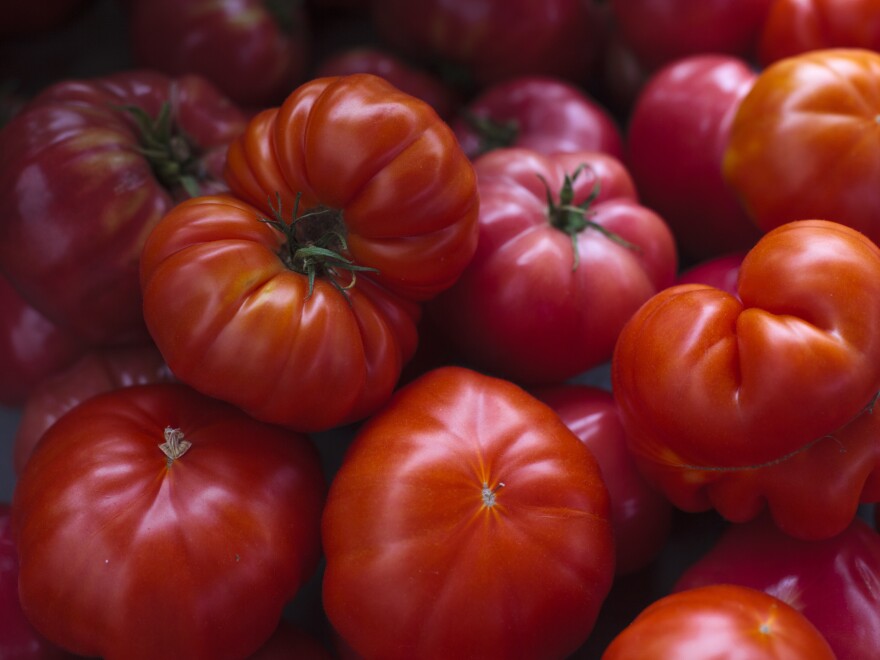As the country celebrates all things Latino, we think it's time to show some culinary appreciation for some of the tastiest foods indigenous to Latin America but that over centuries have been victim to some bad PR, and are commonly associated with European countries.
Mmmm ... chocolate
Television commercials and magazine ads make it seem that the Swiss and the Belgians must be somehow connected to the very origins of chocolate, but the caffeinated treat's history stretches back millennia to what is now southeastern Mexico.
In fact, Smithsonian Magazine reports that the very word stems from the Aztec "xocolatl," which referred to the bitter drink brewed from cacao trees that was often mixed with chilis, special herbs, honey and flowers. The liquid was beaten into a foam, and both inhaled and drunk as part of sacred rituals.
It's well documented that the drink has been around some 2000 years, but anthropologists from the University of Pennsylvania say they've found an even earlier use of cacao — the source of modern day chocolate — somewhere between 1400 and 1100 B.C.E. Ancient pottery discovered in present day Honduras indicates that cultures there made a fermented, alcoholic beverage from the sweet pulp of the cacao fruit.
"Legend has it that the Aztec king Montezuma welcomed the Spanish explorer Hernando Cortes with a banquet that included drinking chocolate, having tragically mistaken him for a reincarnated deity instead of a conquering invader," according to Smithsonian.
It makes sense then that the cacao bean made its first appearance in Spain during the mid-1500s. A century later, sweetened chocolate had become a fashionable and expensive commodity across Europe.
So many ways to enjoy potatoes
While the humble and hearty potato is inextricably linked to Ireland in many people's minds, the tubers were first domesticated in present day Peru and Northern Bolivia nearly 8,000 years ago, according to the BBC.
The Inca and other indigenous people consumed potatoes in many of the same ways we do today. But they also commonly made something called chuño, which is made by repeatedly freezing potatoes in the cold Andes night air then thawing them the next day. People would squeeze all of the moisture out of them, which made them light, soft and juicy and added years to their shelf life.
The preservation process made them perfect for long expeditions and provided security against future bad harvests — both qualities that appealed to the Spanish upon their invasion in the region in 1532.
"The invaders took tubers (the underground parts of the plant we call potatoes) across the Atlantic, as they did with other crops such as tomatoes, avocados and corn, in what historians call the Great Columbian Exchange. For the first time in history, the potato ventured beyond the Americas," the BBC reports.
Since then, the BBC says, the potato has become the world's fourth-most important crop after rice, wheat and maize, and the first among non-grains.

On the subject of tomatoes ...
What's Italian food without tomatoes?
And yet, like the other foods on this list so far, the thin-skinned fruit originated in the Andes Mountains of present day Peru and Ecuador, and is believed to have been domesticated in pre-Columbian Mexico, Britannica tells us.
Similarly, the Aztecs would argue that it's neither toe-may-toe nor toe-mah-toe but rather "tomatl," which the Spanish later translated as "tomate" as they began exporting the tasty round food to Europe during the mid-1500s.
Despite what the Spanish had seen first hand in the Americas, it took some time for Europeans to embrace the tomato as an actual food product. "In France and northern Europe the tomato was initially grown as an ornamental plant and was regarded with suspicion as a food because botanists recognized it as a relative of the poisonous belladonna and deadly nightshade," Britannica says.
There is some evidence that the first exported tomatoes may have been not red but yellow. Researchers base this theory on the fact that Italians called the tomato "pomodoro," meaning "golden apple."
It was also referred to as "poison apple" in other parts of Europe, according to Smithsonian. That is because aristocrats, who were most likely to eat off of pewter plates, would become sick and die after eating tomatoes. But the truth was much more complicated. It turns out that the acidity of the tomatoes leeched lead from the pewter dinnerware and that resulted sometimes in fatal lead poisoning. (Poor people typically ate off of wooden plates so this wasn't as big a problem for them.)
Despite the land connection to South America, the tomato was introduced to North America from Europe.
"Thomas Jefferson is known to have raised them at Monticello in 1781," according to Britannica, which adds that it was first used in food in Louisiana as early as 1812.
Copyright 2021 NPR. To see more, visit https://www.npr.org.




